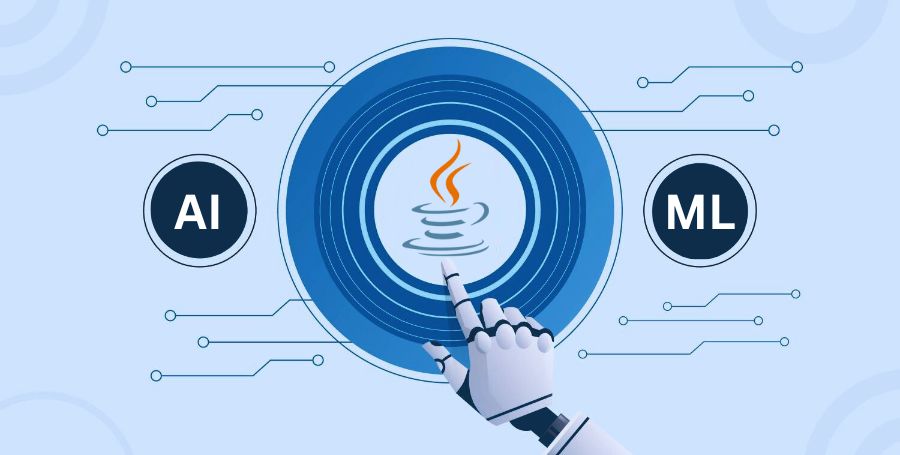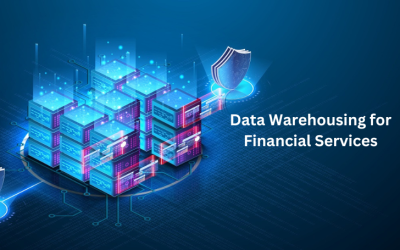Introduction: Understanding Data Integration Challenges
Definition of Data Integration
Data integration involves blending and condensing data from different sources into a unified configuration, improving its quality and consistency. This compromise is critical in terms of data warehousing, organizations with a strong and reliable starting point for powerful examination, informed independent direction and business knowledge.
Importance of Data Integration in Data Warehouse
In a data warehouse, the collected information can be put into different structures. To successfully break down and utilize the information, data warehouse undertakings frequently need to incorporate the data to make it viable. It takes a great deal of manual work, which, thus, can occupy significant time. This data warehouse computerization device can be used to facilitate interaction to combat. Here, we examine why they are so important to organizations.
As data warehouses store information in an assortment of different structures, this can create some problems for data warehouse enterprises and regulators trying to scrutinize the information they hold. Data Integration is the most common way of making an interpretation of all information into one, bound-together structure. The cycle includes revising errors in naming and units of estimation. It enables associations to examine information more productively, drawing results they can actually use.
Common Challenges Faced in Data Integration
Data Integration done manually can frequently turn out badly for various reasons, including:
- Mistaken data went into the source framework.
- Lacking information on interdependencies among information sources.
- Varying timetables among information sources.
- Due to a complex data warehouse framework.
- Approximations utilized in information.
- Different encoding designs.
- Generally speaking absence of strategy and arranging inside the information endeavor.
Role of Automation in Overcoming Data Integration Challenges
Data warehouse automation is an acceptable approach to resolving these issues. Be that as it may, what precisely is mechanization, and what might it do?
Data warehouse automation is portrayed by The Data Warehouse Institute as ‘involving innovation to acquire efficiencies and further develop viability in Data Warehouse automation processes’. They argue that data warehouse automation is significantly more than essentially mechanizing the development cycle. In their eyes ‘it envelops all of the center cycles of data warehousing, including plan, advancement, testing, sending, activities, influence examination, and change the board’.
Benefits of Implementing Automation in Data Warehousing
Therefore, data warehouse automation allows you to undeniably do more in significantly less time, making it an important device for all organizations with an information stockroom.
Quality – Automated processes permit you to control and keep up with quality, no matter how you look at it. It can rule out human errors, which can indicate inconsistencies in the above records.
Agility – Business needs can often change at a rapid pace. While manual mixes may not have the option to be aware of this, data automation can.
Cost – Automation can lessen an association’s expenses. Decreasing how much manual work is included implies that IT-trained professionals and information researchers can continue ahead with other squeezing positions.
Overcoming Data Warehousing Hurdles: Strategies for Effortless Implementation Success
Data warehousing is fundamental for present-day undertakings since it shapes the reason for solid independent direction. However, a Data Warehouse establishment isn’t without its hardships. While helping associations to set up an effective data warehousing system, data warehousing consulting experts regularly face various difficulties.
Top 5 Strategies for Defeating Normal Data Warehouse Automation Difficulties

Data Integration Complexities
Gathering data from different sources represents a test in data warehouse execution. A proficient information mix is essential for keeping up with exactness and consistency. Specialists influence ETL approaches and apparatuses to smooth out this interaction.
Versatility Concerns
As associations develop, so does their information volume. Scaling issues emerge when data warehouse frameworks battle with expanding information loads. Advisors suggest adaptable structures and cloud-based solutions for address versatility challenges, empowering associations to extend their information warehousing capacities depending on the situation.
Execution Optimization
Fast inquiry reaction times are fundamental for constant independent direction. Nonetheless, drowsy execution can prevent this. Specialists center around further developing question execution through methods like information parceling, inquiry storing, and order. Equipment redesigns and question advancement techniques further upgrade data warehouse processing speed.
Information Quality Assurance
Incorrect or deficient information can prompt off-track choices. AWS Data warehouse solutions provider focus on information quality confirmation, utilizing methods like data profiling, purging, and approval to distinguish and redress idata irregularities. Information quality administration apparatuses and execution of data integration techniques are essential for keeping up with information exactness.
Security and Compliance
Protecting sensitive information and ensuring compliance with guidelines such as GDPR and HIPAA are the first concerns. Hearty safety efforts, including job-based admittance control, encryption, and review trails, are worked on by data warehouse specialists. They additionally help with laying out information administration intends to guarantee legitimate consistency.
In the present information-driven world, associations vigorously depend on data warehousing for putting away, making due, and dissecting immense volumes of information. In any case, the way to an effective information stockroom execution is frequently loaded with difficulties.
This article investigates normal obstacles looked during data integration center tasks and features how data warehouse counselling can be the answer for defeat them.
Best Practices for Executing Automation In Data Warehousing
Evaluating Data Quality Audits
1.Directing Data Quality Reviews
Clarification: Before executing automation, conduct comprehensive reviews to survey the current state of data quality.
Activity Steps:
- Distinguish and dissect existing data quality issues.
- Use profiling tools to figure out data peculiarities and irregularities.
2.Characterizing Key Data Quality Metrics
Clarification: Characterize measurements linked to official objectives to measure and screen data quality.
Activity Steps:
- Team up with partners to decide basic information quality measurements.
- Lay out benchmarks for adequate information quality levels.
H3 – Executing Vigorous Information Safety efforts
1.Coordinating Encryption and Tokenization
Clarification: Upgrade data security by integrating encryption and tokenization techniques.
Activity Steps:
- Assess encryption calculations and pick fitting strategies.
- Execute tokenisation to safeguard delicate data during capacity and transmission.
2.Role Based Admittance Control Execution
Clarification: Guarantee secure data access by executing role-based admittance controls.
Activity Steps:
- Characterize jobs and authorizations in view of occupation obligations.
- Consistently audit and update access controls to line up with authoritative changes.
Utilizing Metadata The board
1.Significance of Metadata in Automation
Clarification: Comprehend the meaning of metadata in automating data joining processes.
Activity Steps:
- Teach groups the job of metadata in improving data understanding.
- Underline metadata’s effect on data ancestry, quality, and administration.
2.Computerizing Metadata Catch and Documentation
Clarification: Smooth out metadata on the board by automating the catch and documentation processes.
Activity Steps:
Execute devices that consequently catch metadata during mix assignments.
Foster cycles for steady and robotized metadata documentation.
Persistent Checking and Improvement
1.Continuous Monitoring and Alert Systems
Clarification: Guarantee continuous framework well-being by executing strong observing and alarming instruments.
Activity Steps:
- Set up continuous observation for key information reconciliation processes.
- Lay out ready frameworks to inform groups of possible issues.
2.Iterative Improvements Based on Performance Metrics
Clarification: Encourage a culture of consistent improvement in view of execution measurements and criticism.
Activity Steps:
- Routinely survey execution measurements and distinguish regions for upgrade.
- Execute iterative enhancements to streamline atomization processes.
Future predictions of data integration with the development of automation technologies
1.AI-Driven Automation
Forecast: Automation processes will progressively use human-made logic (artificial intelligence) for smarter dynamics in data combination.
Discussion: AI algorithms will upgrade data planning, change, and quality affirmation processes.
2.Predictive Demonstrating in Automation
Forecast: Future mechanization procedures might consolidate prescient demonstrating, permitting frameworks to expect information reconciliation challenges.
Discussion: Prescient examination will direct robotized processes, limiting mistakes and advancing asset usage.
3.Self-Learning Capabilities
Forecast: Automatic devices will advance with self-learning abilities, adjusting to changing information examples and business necessities.
Discussion: Continuous learning computations will empower robotization frameworks to develop effectiveness over long distances without manual intervention.
Incorporation with Cutting edge Examination and Business Intelligence
Investigating a Consistent Examination Ecosystem
1.Unified Information Platforms
Exploration: Data warehousing automation will unite with cutting-edge examination stages, making brought together environments.
Discussion: Consistent reconciliation will empower associations to get bits of knowledge straightforwardly from their data warehouse without broad information development.
2.Real-time Examination Integration
Exploration: Automation will uphold a constant information mix, working with moment examination for time-touchy independent direction.
Discussion: Organizations can answer market changes quickly, utilizing ongoing experiences for vital preparation.
3.Intelligent BI Automation
Exploration: Business knowledge (BI) tools will become more agile, integrating automated data integration processes.
Discussion: BI phases will continuously integrate with data warehouses, automating data retrieval and investigation and prompting more natural and meaningful experiences.
Likely Impacts
1.Enhanced Choice Making
Explanation: Shrewd automation will give more precise and convenient information for chiefs.
Example: A prescient examination directing important choices in the light of expected market patterns.
2.Efficiency Acquires Across Processes
Explanation: Automation combined with examination apparatuses will smooth out start-to-finish processes.
Example: Continuous information accessibility for examination without manual mediation, decreasing inactivity.
3.Empowering Resident Information Scientists
Explanation: Easy-to-understand BI apparatuses with incorporated computerization will engage non-specialized clients.
Example: Business customers directing high-level testing without heavy reliance on IT groups.
Conclusion
In conclusion, implementing a data warehouse can be challenging, but with the guidance of data warehouse consulting experts, organizations can overcome common hurdles. By addressing issues like data strategy, quality, scalability, integration, performance, security, compliance, and evolving business needs, companies can leverage their data warehouses for informed decision-making and a competitive edge in the data-driven landscape.
Implementing a data warehouse comes with various challenges, making it a daunting task. Data warehouse consulting experts play a crucial role in helping organizations overcome these challenges. By tackling data integration issues, ensuring scalability, optimizing efficiency, preserving data quality, and prioritizing security and compliance, businesses can establish robust data warehousing solutions for informed decision-making. The following sections will delve into best practices and solutions for each challenge in more detail.
The future of data integration promises smarter and seamless processes. Anticipated developments include AI-driven automation and the integration of data warehousing with advanced analytics and BI tools. This evolution is poised to streamline navigation, enhance efficiency, and democratize data analysis within organizations.







